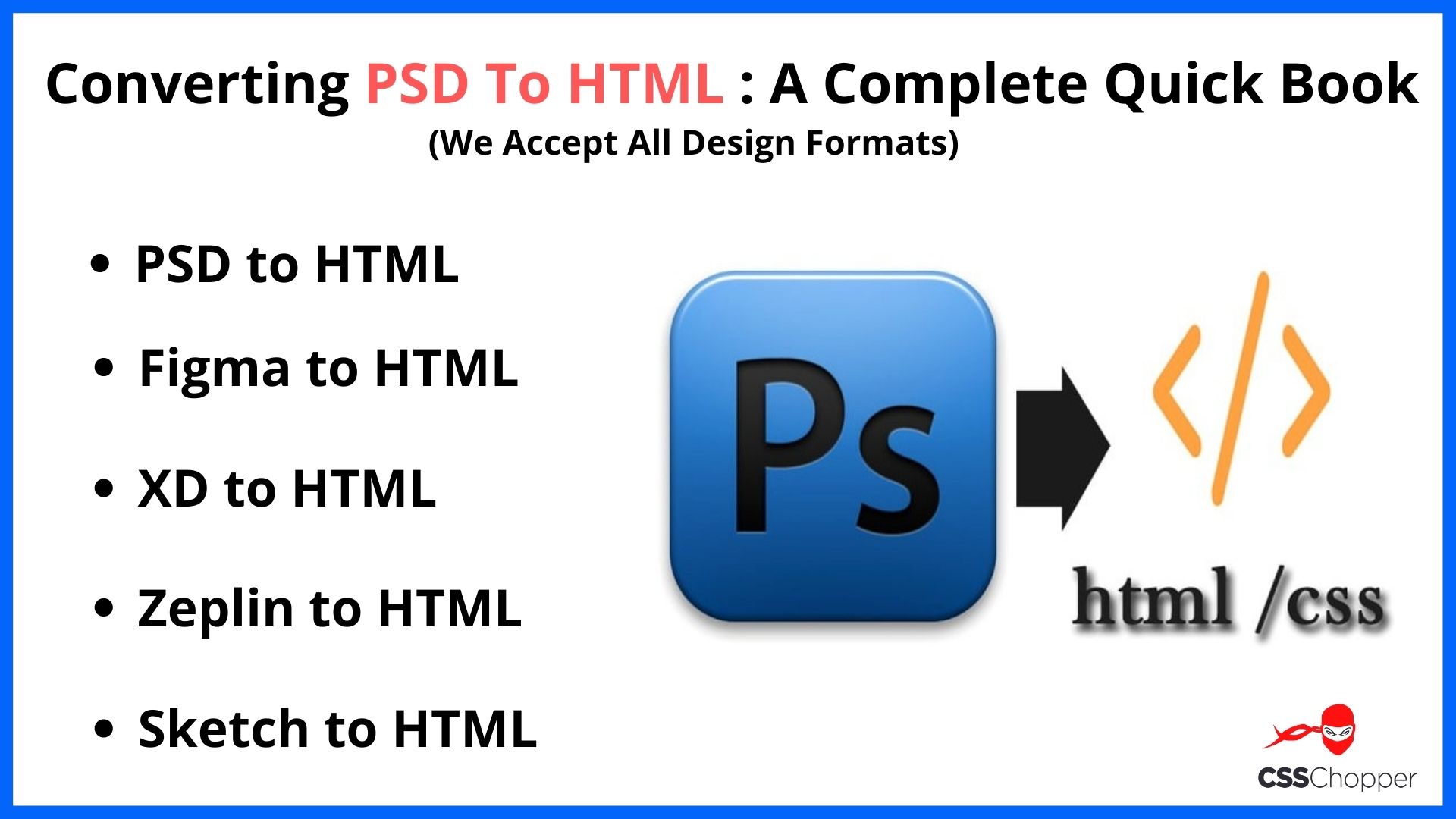Web developers defined HTML5 – the next generation of HyperText Markup Language (HTML). HTML5 is the major revised version of the HTML standard most frequently used by web developers for describing web pages. There is a huge confusion among people when it comes to choosing HTML5 Vs HTML.
It’s really tough to say whether the HTML5 is an end of PSD to HTML conversion service or the beginning of PSD to HTML5 conversion service? In this context, we have differentiated HTML5 versus HTML to find out which one is better for PSD to HTML conversion and Why. Let’s start with HTML5.
The HTML5: In Defense
W3C and WHATWG together are the creators of HTML5 – the language of the web which is much more than just markup syntax like its predecessors HTML, HTML, HTML 1.0 to HTML 2.0, HTML 3.0, HTML 3.2, HTML 4.0, HTML 4.01, XHTML 1.0, XHTML 1.1, and XHTML 2.0.
Interestingly, a new revision of HTML – the HTML5 is the best solution for incomplete and inconsistent browser support because it is strongly supported by Apple, Opera, Mozilla, Microsoft, Google, etc. As per market status, it seems that the HTML5 is becoming a mainstream of the World Wide Web when it comes to web development.
The HTML5 comes with great peculiarities such as backward compatibility, device-independent, reduced need for external plugins, better structure, drawing, media content, and better error handling. Besides that, the HTML5 backed with a great set of interesting new features including canvas element, video and audio elements, better support (for local offline storage), new form controls (calendar, date, time, email, url, search), new content-specific elements (article, footer, header, nav, section).
The HTML: In Defense
HyperText Markup Language (HTML) can be explained as a complete markup language associated with a set of HTML markup tags used by web developers as basic building-blocks seamlessly to represent web pages. The predominant mark-up language is written in HTML elements or HTML mark-up tags enclosed within angle brackets <HTML>. Web browsers like Internet Explorer or Mozilla Firefox used to read HTML documents and use HTML mark-up tags to interpret page content and display them as web pages.
Also Read: Comprehensive Guide On PSD To HTML Conversion
HTML5 vs HTML
- In HTML, DOCTYPE is longer e.g. < ! DOCTYPE HTML PUBLIC ” – // W3C // DTD HTML 4.01 // EN ” ” http://www.w3.org/TR/html4/strict.dtd ” >. On the contrary, DOCTYPE is basically required to enable HTML documents standard mode e.g. < ! DOCTYPE html >.
- Audio < audio > and < video > Video elements are the new features of HTML5 whereas no such features are available in HTML.
- In HTML, Browser Cache is used for temporary storage only whereas Application Cache, Web SQL Database, and Web storage are available as client-side storage and interestingly, it is accessible using JavaScript Interface in the HTML5 based compliant web browsers.
- HTML5 is supported by most modern browsers such as Firefox, Mozilla, Opera, Chrome, Safari, etc whereas HTML only supports old browsers.
- HTML does not allow JavaScript to run in the browser whereas HTML5 allows JavaScript to run in the background.
Scope of PSD to HTML Conversion in the Generation of PSD to HTML5 Conversion
“Code compliance with the latest W3C standards” is the cornerstone of PSD to HTML conversion service offered by HTML developer from Web Development Company. At this end, the role of converting PSD to HTML will always remain significant even in the next generation of the HTML i.e. the HTML5. The reason is simple – the unformatted and unstructured XHTML-CSS codes cannot be solved by backward compatibility and error handling capability of new HTML standard HTML5. In fact, the new revised HTML5 cannot underestimate the significant importance of PSD to HTML/ XHTML/ CSS conversion.
Categories
Recent Posts
Popular Posts
- How to Choose a Reliable Offshore Development Partner?
- Transforming Web Development with HTMX’s Declarative Approach for Dynamic UIs
- Why Your Conversion Funnel Needs a Composable Commerce Solution?
- How to Outsource Web Development in 2025: Complete Guide
- What are the Top Web Development Trends for 2025?




